You can view this information in two different ways. Our alphabetical list provides information on the status of each species within the harbour, finder dates and names, photos and favoured locations. By clicking on the Systematic List button you will be presented the full Poole Harbour systematic list which includes status of species, pending records and historical accounts.
To date, 333 species have occurred and have been accepted within the Birds of Poole Harbour boundaries. A further 11 distinct subspecies have also been seen. In addition, we have two species/subspecies which have been recorded, but are awaiting acceptance by the appropriate records panel.
There are a handful of historical records, for which there is currently insufficient information to allow their inclusion onto the Poole Harbour list, but are believed to be genuine records. They are listed at the end of the list.
Finally, there are a number of feral or escaped species that have been recorded within the Birds of Poole Harbour boundaries. They are included for completeness, but are not included on the Poole Harbour list.
We would be interested in hearing details of any species that do not appeared on this list.
The Birds of Poole Harbour systematic list is a PDF which you can view by clicking on the button below. It was last updated on December 2019.
Full Poole Harbour Systematic List
Sterna forsteri
Vagrant
An amazing record of 1 first seen in Lytchett Bay on the afternoon of April 23rd 2023 found by Steve Smith, which was then later re-found on the Brownsea Lagoon webcam that same evening.
This was only the 2nd Dorset record and is likely to have been the same individual which had been up at Sutton Bingham reservoir 10 days previously.
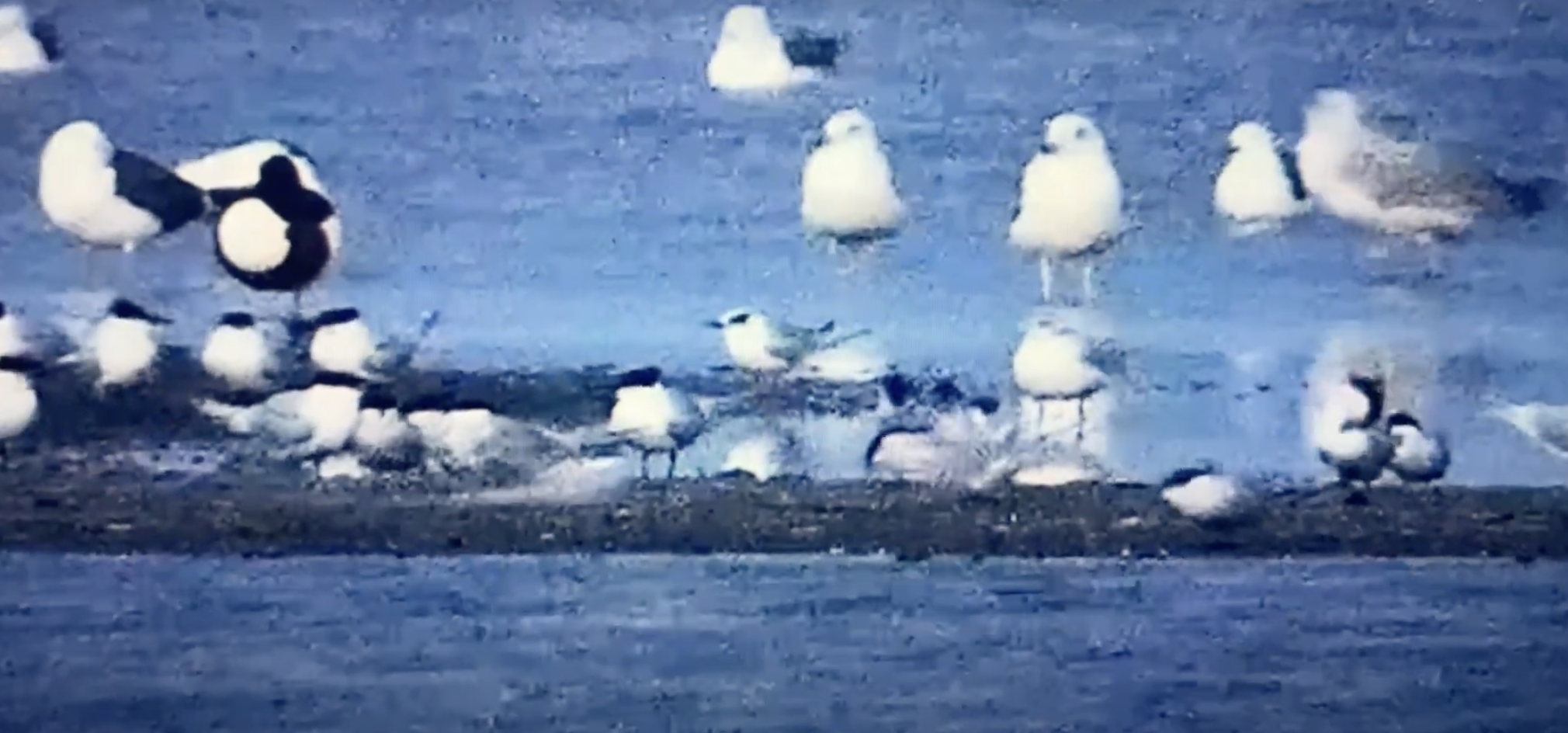
Larus pipixcan
Vagrant
Up to the end of 2014 there have been 72 British records of this attractive Nearctic species. 5 of these have been in Dorset but only 1 in the harbour. How long before we can add the closely related Laughing Gull to the harbour’s list? It occurs almost 3 times as frequently in Britain.
A 2nd W on 17th Jan 2008 off Holton Lee in the large evening gull roost in the Wareham Channel (J.Lidster, N.Hopper). See page 197 of DBR 2008 for full write up.
Fulmarus glacialis
Summer Visitor & Passage Migrant
Present throughout the breeding season, can be seen anywhere from Old Harry to Ballard Point although populations are declining. Regular passage bird out in Poole Bay. Fulmars first arrived in Dorset prospecting for nest sites in the 1940’s, with the first records for them settled on Ballard in 1982. More unusual sightings involve a bird flying high west over Stoborough on 17th June 1978 and one found grounded on a pavement in Wareham after a heavy hailstorm on 25th April 1991.
Passage birds regularly seen from Branksome Chine with a high counts of 41 past on 11th May 1997 also a ‘Blue Phase’ bird there on 23rd May 1996.
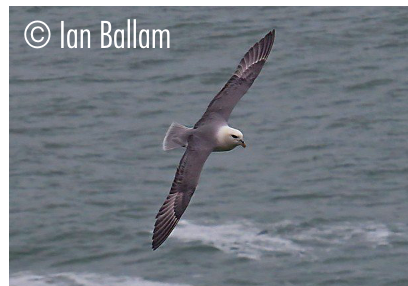
Anas strepera
Resident
Gadwall is a relatively new breeding species that has slowly colonised. Before 1968 it was only seen in ones and twos then a regular flock built up on Little Sea and flocks are now found regularly on Hatch Pond, Little Sea, Swineham GP, Arne Moor, The Wareham Channel sand Brownsea. Gadwall from the Baltic and Russia, the Netherlands, Poland and Denmark are thought to supplement the locals in winter. The maximum harbour count was 126 on 7th November 1993 but 177 were logged during the December 2019 WeBS count. Recent breeding records include Brownsea, Swineham, Frome Valley and Arne Moors. The average 5-year winter total population is 159 per winter.
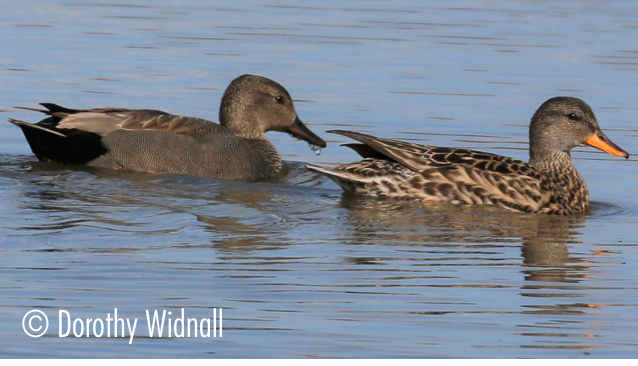
Morus bassanus
Erratic, but Regular Coastal Species
Can be seen fishing in Poole Bay throughout the summer in flocks of up to twenty birds. Can also be seen passing Branksome Chine and Old Harry in onshore winds from March to November. Rarely enters the harbour but do occasionally feed in and around the harbour mouth and have even been seen over Wareham before! During a Branksome sea watch in autumn and spring Gannet can pass in good numbers out in Poole Bay, especially in a south-east wind. The maximum passage recorded is of 300 birds past Branksome on 29th August 1997. In 2000 two were seen on Brownsea Island Lagoon with an adult on there on 3rd January and an immature with a broken wing in the Orchid Meadow on 8th Oct. The nearest breeding colony is in Alderney in the Channel Islands.
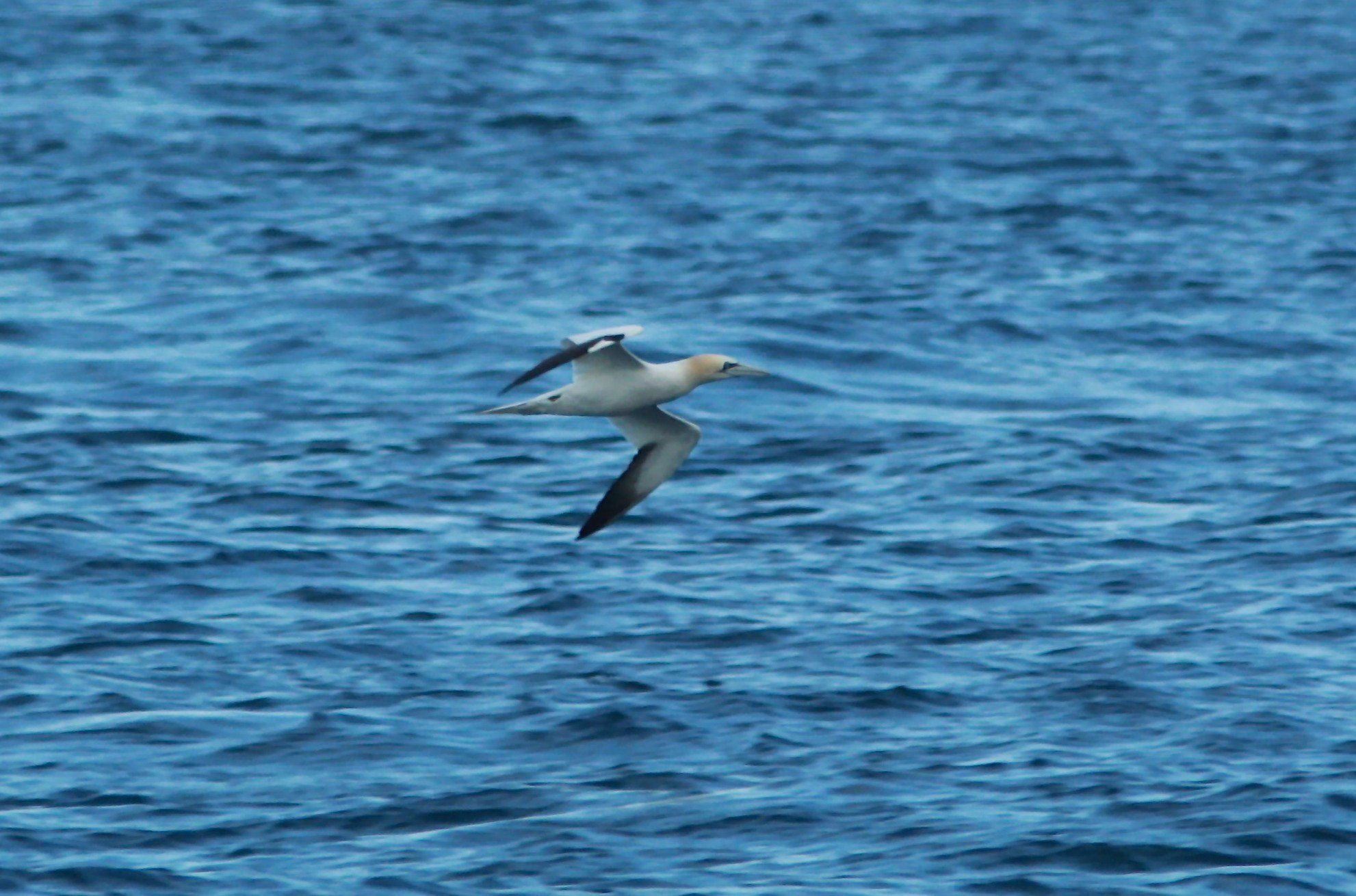
Sylvia borin
Summer Visitor & Passage Migrant
Can be seen on passage at Ballard, Greenlands Farm, Fleets Corner, Studland, Arne, Lytchett Bay and other sites with suitable scrub habitat. Very sporadic breeder with records from the Corfe River Valley and Lytchett Bay. Very scarce on spring migration and much more frequent on autumn migration.
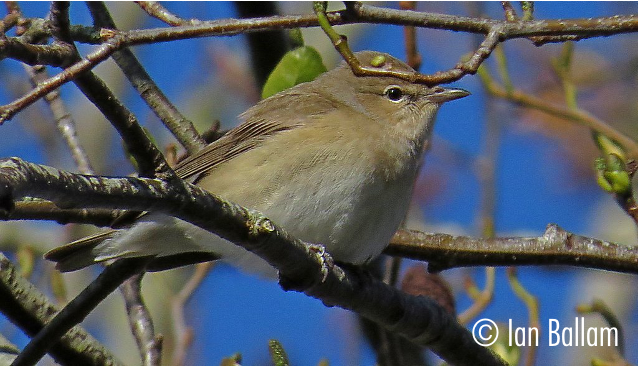
Anas querquedula
Scarce Passage Migrant
The best chance of seeing this species in Poole Harbour is through March to April and August to September. Fine spring drakes can appear on any flooded fields or wetland such as the Swineham scrapes, Lytchett Fields or Wareham Common. Swineham GP are also worth checking. Garganey also join the eclipse flocks of Teal at Brownsea, Middlebere, Arne and Lytchett Bay in the autumn but are much harder to find as they too are often in eclipse plumage.
They actually bred in 1940, and there was also a pair at Little Sea in 1956. It was suspected of breeding on Brownsea in 1967 and again off the Holton Shore in 1980 and there were a pair at Keysworth in 1991. To see more breeding attempts it’s all about improving the habitat and the Swineham/Arne Moors area seems most likely for them to attempt again.
The most recent records have been from Swineham GP, Swineham scrapes, the Brownsea Lagoon, Lytchett Fields and Wareham Common.
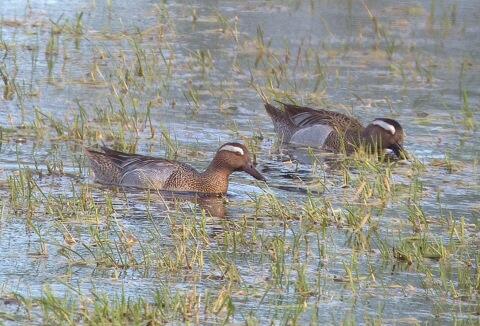
Larus hyperboreus
Rare Visitor
A large brut of a gull, Glauc’s mainly appear in February and March and can be tracked down at sites where large gatherings of other gull species can be found. There are plenty of Poole Harbour records, although sightings do seem to have dwindled somewhat over the last 10 years.
1 on 29th Aug 1940 at “Poole Harbour” (per GPG2004)
1 from 24th Jan – 22nd Mar 1952 at Poole Quay
1 on 1st Oct 1956 at Poole Harbour entrance
1 on 18th Apr 1964 at Little Sea
Ad on 27th Jan 1982 at Flaghead Chine
1st W on 22nd Jan 1983 at Little Sea
1st W on 10th Feb 1984 at Canford Heath Tip
1 on 20th Dec and 28th – 29th Dec 1986 at Studland Bay / Little Sea
1 on 31st Jan 1987 at Studland
2nd yr on 22nd Oct 1988 at Brownsea
Two 2nd W on 28th Dec 1988 at Little Sea
2nd W on 31st Jan 1989 on Littlesea (presumably one of the above birds)
1 on 24th Feb 1991 in “Poole Harbour” (per DBR1991)
1st W on 12th Jan and 29th Mar 1992 at Little Sea
1st W on 12th Feb 1995 at Brands Bay
1st W on 6th and 14th Jan 1996 in Brands Bay
Ad on 5th Dec 1996 at Studland
1st W on 14th Mar 1998 at Brands Bay
1st W on 25th Nov 2000 on Brownsea Island
1st W on 29th Mar 2001 on Brownsea Island
1st S on 10th Mar 2002 at Ower and Brownsea Island and through harbour mouth on 12th.
1 on 10th Dec 2006 and at Arne (Unusual amongst recent records in that it was unaged (per DBR2006)
Imm on 28th Feb 2009 in Bramble Bush Bay
Ad on 1st Mar 2009 in Brownsea Roads
1st W on 19th Feb 2014 on Brownsea lagoon – discovered via the Brownsea webcam!
1 2nd winter on 15th 2014 at Sandbanks
1 Adult on 8th Mar 2020 (Graham Armstrong)
2cy 2nd – 9th Feb 2021 on Brownsea Lagoon (P.Morton et al)
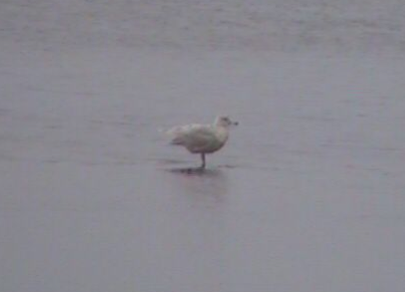
Plegadis falcinellus
Vagrant
After 5 records involving 15 birds in the 19th century we had to wait more than 130 years for the next. Despite the resurgence in Glossy Ibis records in Dorset and the UK since 2010 the species still does not occur in the harbour as often as one would expect, but does seem to be occuring at least once per year somewhere in the harbour.
1 shot in 1839 in “Poole Harbour” (per LGRE94)
2 shot in Aug 1842 at Lytchett Bay
1 shot in 1857 at Wareham (per LGRE94)
7 “obtained” in late Sep 1857 in “Poole Harbour” (per GPG2004)
4 in 1877 in “Poole Harbour” (per LGRE94)
1 on 13th Aug 2010 at Holes Bay (R.Collier)
1 from 12th – 26th Feb 2012 was seen around Wareham, Bestwall and Swineham (N.Gartshore et al). It originated from Coto Donana, Spain where it was colour ringed on 12th May 2004. It was seen at Oued Massa, Morocco on 29th Apr 2005.
1 on 30th Nov 2013 at Middlebere (M.Wright)
Recent Records
2016
Lytchett Fields RSPB 1 on 11th May (ID Ballam et al), remaining until 13th.
2018
Poole Harbour 1 at Lytchett Fields RSPB during the morning of 1st May moving to Arne Moors RSPB in the afternoon; subsequently at Swineham GPs on 6th & 8th May and at Arne Moors RSPB on 7th May (R Howes, JR Mitchell et al).
2019
Poole Harbour 1 at Swineham GPs and Arne Moors RSPB on 15th-17th Feb (N Hopper et al).
2020
Lytchett Fields RSPB Singles on 14th Sep (Ian Ballam) and 20th Oct (Shaun Robson et al). Middlebere 1 flew over on 1st Dec (Bob Buckler).
Studland 2 on 20th Oct, 1 E over Old Harry and the second NW over towards Glebelands (Nick and Jackie Hull et al).
Swanage 1 circling over Peveril Point on 20th Oct and another W on 21st Oct (Vic Saville).
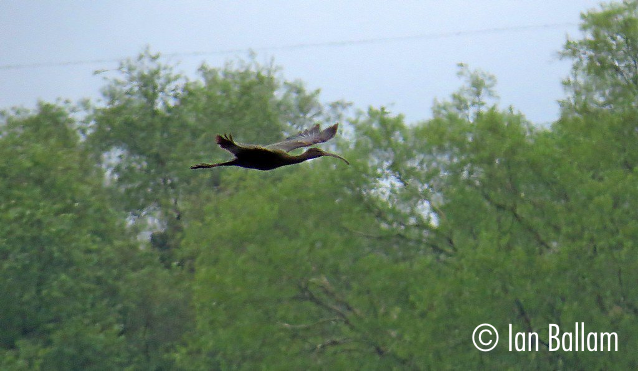
Regulus regulus
Resident
Breeds in any suitable habitat throughout the harbour, particulary in the large strands of coniferous forest near the southern and western shores. Breeds at Arne, Upton Country Park, Canford Heath, Sandbanks, Studland, Middlebere and Lytchett Bay. Good numbers can be evident in the woodlands and hedgerows around the harbour during October mixing with various warbler and tit species. The headlands around Ballard and along the Studland peninsular can see large falls in October during irruption years.
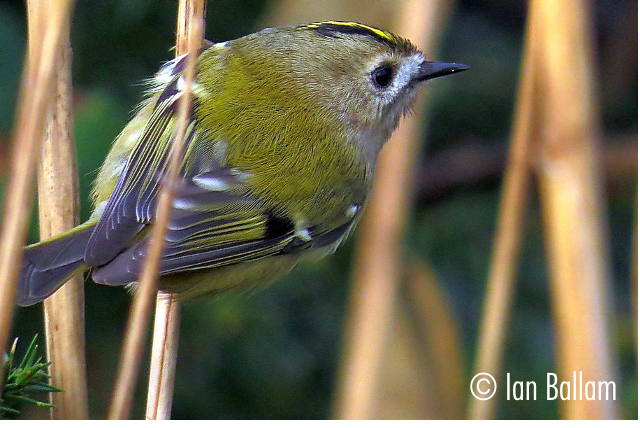
Oriolus oriolus
Vagrant
A joy to find on a late spring day, surely a male Golden Oriole is a birders prize find. With 14 Poole Harbour records it’s obviously an area they like, but trying to track one down across all that suitable habitat is surely one of the reasons they’ve been impossible to re-find once discovered and why so few birders have been able to connect with one.
1 noisy male on 4th June 1960 on Studland Heath
1 male on 14th May 1967 at Studland
1 on the 1st July 1967 at Arne
2 on 23rd May 1968 near Arne
2 males on 23rd May 1977 at Brownsea
1 calling on the 1st -3rd June 1977 at Shipstal/Arne
1 on 11th June 1979 at Swineham
Singing male on 20th – 21st May 1981 at Arne
Singing male on 20th May 1993 at Lytchett Bay (E.Brodie)
Singing male on 3rd Jun 2004 at Studland (I.Prophet, G.Armstrong)
1 male on 18th May 2017 on the edge of Hartland Moor (R.Webb)
1 male on 19th May 2017 on 7th Hole of Purbeck Golf Club (H.Murry)
1 male on June 1st 2021 singing at Claywell, Rempstone (P.Morton)
Chrysolophus pictus
Scarce Resident
Golden Pheasant were first introduced to Green Island in the 1920’s by Mrs Ella Barrett where it established itself. Birds of Dorset suggests that they was released as late as the 50s but the history of Poole Harbour shows Mrs Ella Barrett leased the island between the wars (1920 and 30). In the second world war Green Island was used for military exercises and no one was there to feed the Golden Pheasants so is assumed they became feral around then. They were there routinely by the nineties and the potter, Guy Sydenham, who lived there as a caretaker said that they had been on the island as long as he had.
They spread from Green Island to Furzey and in 1962 were introduced to Brownsea. In the 90’s it was decided by the dorset Bird Club that as it had been on those islands self supporting for decades they would included it in the report.
Only tiny numbers are left on Brownsea (just 1), but they’re still present on Furzey Island, Green Island and now Round Island. They’re not easy to see and are sometimes visible at great distance from the mainland at Studland looking back across on the slipway of Furzey Island. Now they’re present on Round Island it may be possible to view them from Shipstal Point, Arne using a telescope.
A recent 2020 survey of all the islands produced the below harbour population totals :-
Brownsea Island – 1
Green Island – 12
Furzey Island – 16
Round Island – 4
Total Poole Harbour population = 33 individuals
Pluvialis apricaria
Scarce Winter Visitor
Sporadic in their appearances around the harbour, the fields around Bestwall and Swineham are usually the best places to look as they ‘hang out’ with Lapwing. Some passage does occur with records over Ballard and Studland in October. The Harbour maximum is over 300 at Bestwall but birds are erratic in their appearance, some years they can be ever present on the meadows at Bestwall but the following year barely recorded at all. Without doubt cold weather movements make Golden Plover more conspicuous and in recent cold spells birds have been found sheltering and feeding in very urban sites like Baiter Park, Holes Bay and Whitecliff.
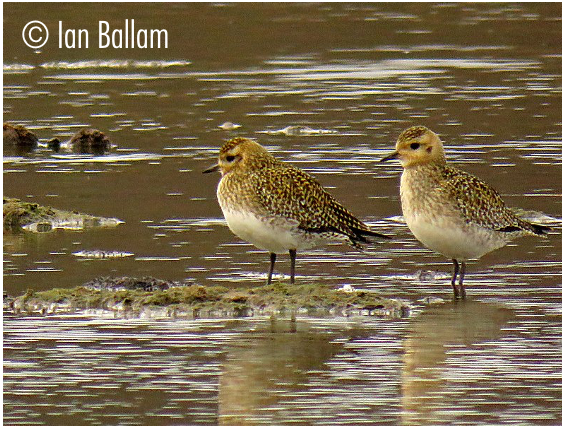
Bucephala clangula
Winter Visitor
Poole Harbour was a nationally important site in winter and held over 80% of the counties birds. Numbers had increased over the last sixty years with a maximum estimate for the harbour of 500 in 1963 and an actual count of 405 in February 1998. Often witnessed tossing their heads back and displaying they are easily seen anywhere across the whole of the open water of the harbour during the depths of winter, however from Shipstal Point at Arne, the Wareham Channel and out in Brands Bay small groups can be viewed. Poole Park boating lake is also good for watching Goldeneye, especially from December to late February.
Their status now is one of concern and has seen a dramatic decline over the last 20 years with the last 5-year average each winter consisting of just 79 birds per winter!
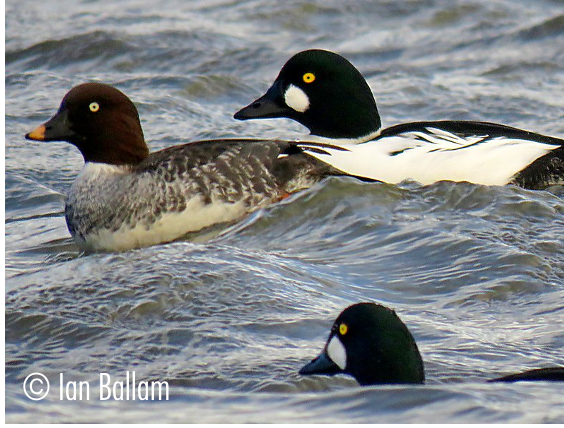
Carduelis carduelis
Resident
Easily now one of the most common birds in urban and rural gardens around the harbour. Easily monitored on migration during October and November at sites like South Haven, Ballard and Glebelands often with thousands passing in a single morning. Now nearly all garden feeders around the harbour support Goldfinch.
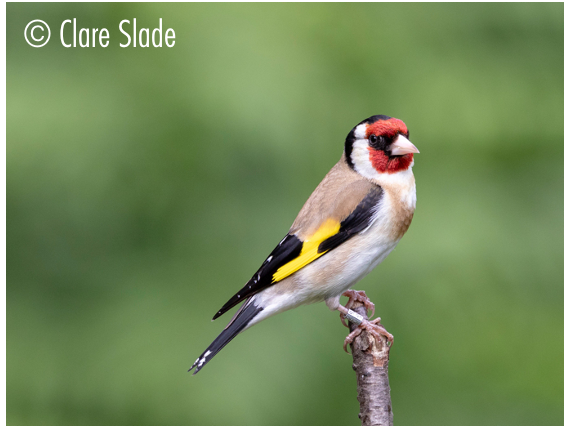
Mergus merganser
Scarce Winter Visitor
Goosander are another bird drawn to the harbour in by extreme cold weather. Check the warmer waters of Holes Bay during a big freeze or the Swineham GP. Birds have also been recorded off Arne, Hamworthy Beach, Lytchett Bay, Brands Bay and the Holton shoreline. Goosander is an annual visitor to the harbour mostly during late autumn passage. They usually only stay around for a day or two and move on. The closest wintering birds are up the River Frome and the Piddle. Occasionally these birds stray downstream to get in the recording area. Weekends are a good day to look for them within the harbour as this is when most duck shooting occurs and they are flushed downstream into the Wareham Channel. Little Sea at Studland has also recently seen a few Goosander.
Larger numbers normally occur in colder weather with 57 off Arne and Hamworthy on the 4th February 1957. This is the maximum harbour total. The earliest record is on 6th October 1957 and the latest was the 16th April 1984.
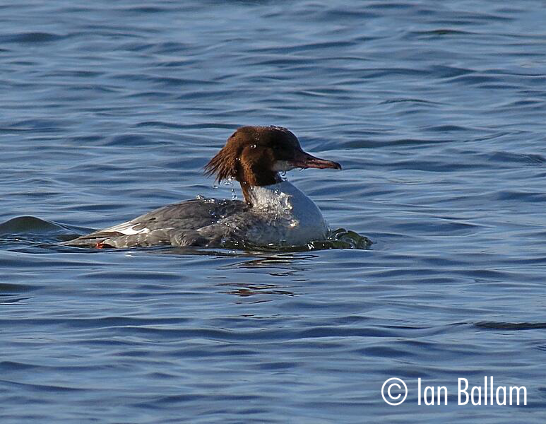
Accipiter gentilis
Rare Visitor
There used to be no real pattern regarding Goshawk in the harbour. It was likely once a wide-spread breeder across Dorset, but like many birds of prey, was probably persecuted to extinction over the last couple of centuries. It was first re-recorded in 1976, with a female or immature seen, then another at Arne on 3rd April and one was seen flying west over Sandbanks on 13th November 1976. An immature at Middlebere was then logged on 2nd January 1978.
It was regularly recorded in the 80’s with records in 1980, 1981, 1982, 1984, 1985, 1986 and 1988. These came from various sites including Arne, Brownsea, Studland, Wareham Water Meadows, Holton Heath and Holes Bay.
In the last 20 or so years records declined and also the area of occurrence shifted focus to the northern half of the harbour. However, by late 2021, sightings became more frequent and by 2023 it was found that at least 2-3 territories were present in the harbour. It’s now thought that currently (2023) there are an estimated 30-40 pairs in Dorset, but that could be a massive under estimate. The regular sightings over the Osprey nest site and the presence of several juveniles in and around the harbour during 2023 suggest they’re making a strong come back.
Recent sightings include……
1 on 4th Apr 1994 at Lytchett Bay (E.Brodie, R.Howell)
1 on 11th Feb 1996 at Lytchett Bay (D.Philpott)
Male on 20th Feb 1996 at Swineham (I.M.Lewis)
1 on 25th Oct 1997 at Lytchett Bay (P.Benham)
1 on 16th Jan 2000 in Broadstone (E.Brodie)
Female on 25th Feb 2003 at Keysworth (H.Wood-Homer)
1 on 19th Feb 2007 at Holes Bay (E.Brodie)
1 on 21st & 23rd Oct 2017 at Middlebere and Wareham Channel (S.Buckell et al)
Singles over Slepe Heath on 13th Sep and 13th Oct 2019 (P Hadrill).
1 juv on 28th Nov and 15th Dec 2020 at Lytchett Fields RSPB (Ian Ballam et al). Massive flushes of pigeons and corvids alerted observers to its presence.
From winter 2021/22 onwards sightings of adults and juveniles became regular at Middlebere, Rempstone and the Piddle Valley.
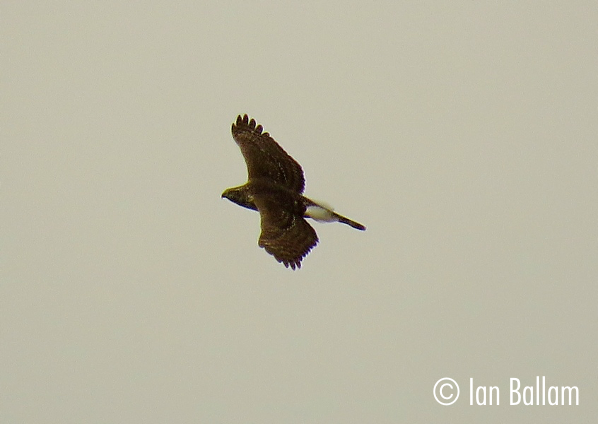
Locustella naevia
Passage Migrant
Massively under recorded due to their shy nature, ringing totals from Lytchett Bay, Ballard Down and Keysworth show good numbers pass through the harbour especially in Autumn. A staggering 446 birds were ringed over 8 consecutive Autumns (1991-1998) and on August 25th 2017 73 were ringed up on Ballard in a single morning. Spring birds do ‘reel’ occasionally with Bestwall and Wareham Water Meadows, Ballard and Lytchett Bay being good sites in recent years.
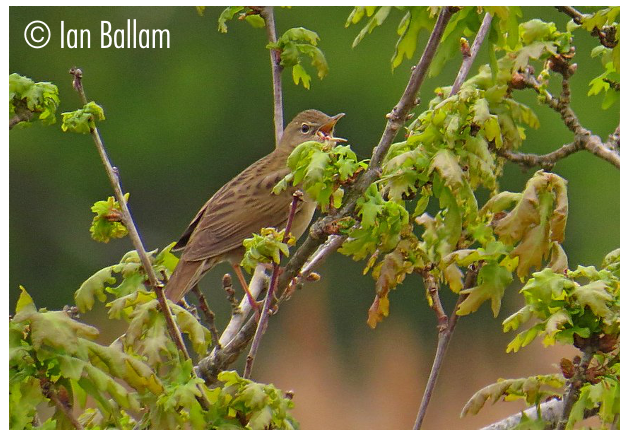
Larus marinus
Resident
First bred in Poole Harbour in 1957 and has bred most years since. The two favourite breeding spots are on top of Old Harry and the Brownsea lagoon, with varying levels of success. Can be encountered at most places around the harbour with the Holes Bay area attracting good numbers in winter. A 2017 breeding Gull survey showed 28 nests within the Poole Harbour recording area.
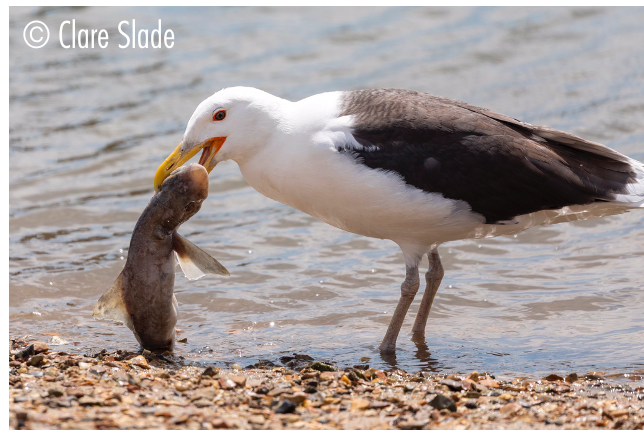
Otis tarda
Vagrant (One Historical & Recent Reintroduction Record)
Pulteney, writing in 1813, says: “The Bustard is now becoming very scarce even in Wiltshire ; a few stragglers make their appearance now and then about Woodyates and Ashmore Downs ; single birds have been killed in Langton parish, in Studland. On this basis Great Bustard is included on the Poole Harbour list.
Dorset has seen a recent surge in Great Bustard records since the reintroduction program on Salisbury Plain. Some of these birds migrate away from their reintroduction sites and head south. The only two Poole Harbour records coming from Holme Bridge (N.Hopper, S.Robson) and Lytchett Minster (I.Ballam)
Podiceps cristatus
Resident
Along with Red-breasted Merganser, Great Crested Grebe is one of the easiest birds to see in the winter out on the open water bodies of Poole Harbour, with central and southern harbour hosting good numbers of 200+. Evening roosts between Furzey Island and Round Island can hold up to 100 birds. Breeding now takes place at Hatch Pond, Little Sea, Studland and Swineham GP.
Resident breeding bird. A few pairs breed in the harbour. Hatch Pond is the most regular, with at least one pair present every year since …..through the 90’s and into this century, Little Sea (1 pair 1 young 1997) and Wareham channel (1 pair 1996).must be more records
Wintering birds usually begin arrive in late summer around the Brands Bay area, presumably British breeding birds, with half of Dorsets wintering Great-crested Grebes occurring around the harbour making it one of the most important wintering areas in Dorset.
During the Big Poole Harbour Bird Count on Feb 19th 2020 a maximum harbour count of 239 were logged across the whole harbour. Outside of the harbour a maximum for Poole Bay is 107 on 6th January 1998.
Over-summering non-breeders gather in the Wareham Channel with a flock of 11 in late May 2020 and 5 in Holes Bay during the same period.
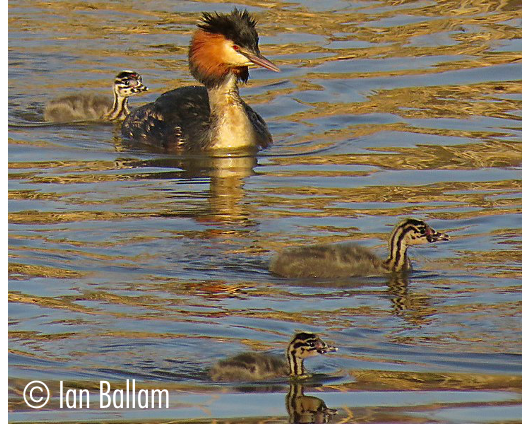
Lanius excubitor
Scarce Winter Visitor
Any of the heathland sites surrounding the harbour could host an over wintering Great Grey Shrike. Records over the last 35 years emanate from Studland, Arne, Hartland Moor, Canford Heath, Upton Heath and Holton Lee/ Holton Heath NNR. During the winter of 2016/17 three different birds were present in the harbour (Wytch Heath, Hartland Moor, Arne) and in spring 2017 an individual stayed until May 12th which is the latest date for Great Grey Shrike in Poole Harbour.
Recent Records
2016
Morden Bog 1 between 6th Jan and 25th Mar ranging to Oak Hill.
Upton Heath DWT 1 on 11th Jan.
Canford Heath 1 on several dates between 3rd Nov and 29th Dec.
Godlingston Heath 1 on 29th Dec.
Hartland Moor 1 on several dates between 25th Oct and 29th Dec.
Morden Bog 1 on several dates between 18th Oct and 18th Dec.
2017
Arne RSPB 1 on several dates between 3rd Jan and 9th Apr.
Canford Heath 1 on 1st Jan.
Hartland Moor 1 on several dates between 7th Jan and 3rd May.
Wareham Forest 1 on several dates in the Oak Hill, Morden Bog and Sugar Hill areas between 21st Jan and 10th Apr.
Wytch Causeway 1 on 11th & 12th Mar. Wytch Heath 1 at Scotland Farm on 10th May. Great Ovens Hill 1 on 28th Dec.
Hartland Moor 1 on 29th Oct.
Morden Bog 1 on 22nd, 26th & 28th Nov.
2018
Morden Bog 1 on several dates between 11th Jan and 15th Apr and on several dates between 2nd Nov and 28th Dec ranging as far as Sugar Hill.
2019
Wareham Forest The wintering individual remained from 2018 until 27th Mar, the majority of reports being from the Sugar Hill area. Presumably the same bird returned from 7th Nov until the year end, around Sugar Hill initially and later at Morden Bog.
2020
Wareham Forest The wintering bird from 2019 was reported, usually around Morden Bog, until 28th Mar
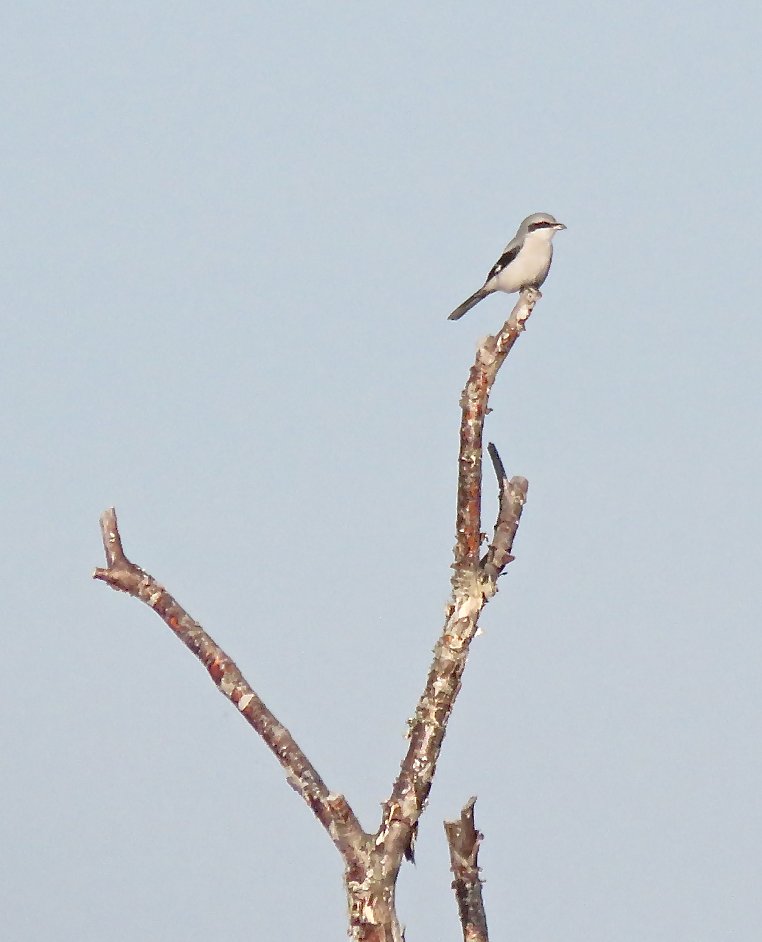
Gavia immer
Passage Migrant & Winter Visitor
The most common of the three diver species. Found inside and outside of the harbour. Outside they can be seen in Poole Bay from Branksome round to Old Harry, whilst inside the harbour they prefer the deep channels around Brownsea, Brands Bay and the harbour mouth. Can be encountered off the beaches at Shipstal, Hamworthy, Baiter and Shore Road on cold, still winter mornings and have even turned up on Poole Park boating lake in recent years.
Numbers tend to be highest after sustained long periods of bad weather when birds enter the harbour for shelter. The wet and windy winters of 2013/14 and 2019/20 saw harbour records broken each time with a high count of 16 around the harbour on February 12th 2017 and 19 logged during the Big Poole Harbour Bird Count on Feb 19th 2020.
Passage occurs out in Poole Bay in autumn and spring and some full summer plumaged birds have even been logged sat out on the water in Poole Bay during May and early June.
Spring passage:
7 past branksome on 4th March 2002
9 off Branksome 2nd April 02
1 past Branksome 15thMay and 27th may 02
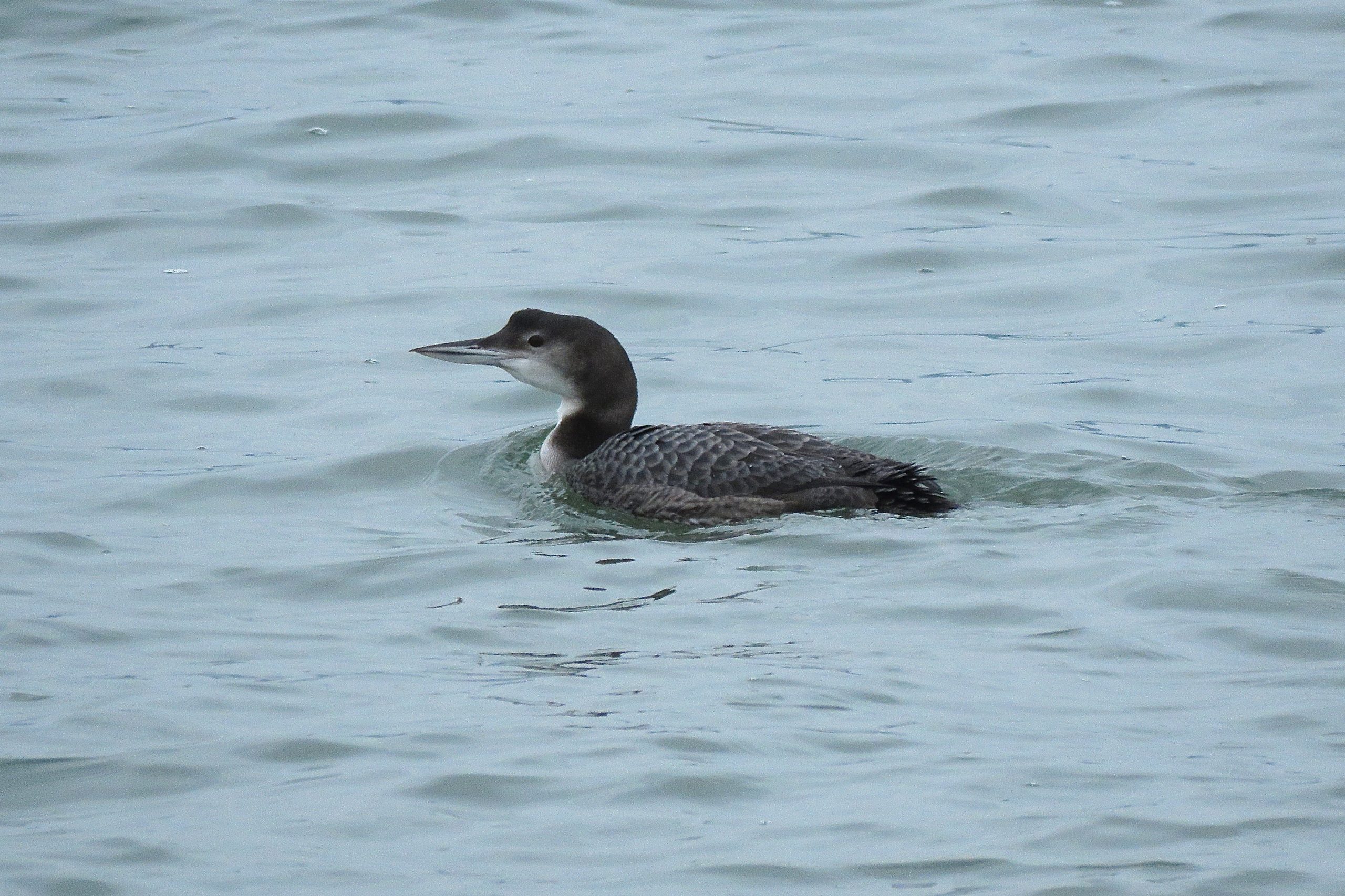
Acrocephalus arundinaceus
Vagrant
Further potential spring records aren’t impossible and listening during April in May at Swineham or Lytchett Bay for their distinctive song is the best chance of trying to find the next Poole Harbour record, although to date there is only one record for the harbour.
1 from 6th – 22nd June 1969 at Little Sea (J.R.Cox, P.G.Hawkins et al)
Puffinus gravis
Vagrant
One on 7th June 1877 ‘at Poole Harbour’ (per GPG2004). This record may seem extraordinary both in terms of location and the early date. However 1877 is famous in meteorological terms for the Atlantic hurricane season. This was the most active ever and it started in Bermuda in mid-May.
Stercorarius skua
Passage Migrant
Watching the outer harbour bays in strong on-shore winds during spring or autumn could eventually produce a Great Skua. This is the commonest of the family in its occurrence in the area. Very rarely recorded in the harbour itself although one did spend two days on the Brownsea Lagoon in autumn 2017. The harbour maximum involving between 16 and 23 individuals through Studland Bay on 18th Oct was as a result of the famous 1987 hurricane. Up to five birds were seen resting on the water.
Gallinago media
Vagrant
An undated record of 1 shot at Worgret Farm in the 19th century (H.Garland per MP). The exact location of the farm at the date of the record unknown though it seems that it was within the recording area boundary.
The second record is more convincing in terms of its certainty with regard to the recording area. 1 shot on 10th Oct 1896 at Wareham Water Meadows
Dendrocopos major
Resident
Any wooded area will hold Great Spotted Woodpecker, even in the urban north of the harbour. Arne tends to have 4-5 Breeding pairs each year with Lytchett Bay, Upton Country Park, Studland, Ridge, Holton Lee, Swineham and many other areas recording breeding birds. Their is a small passage of local birds in the autumn that can be witnessed flying across the harbour mouth in ones and twos early in the morning during October.
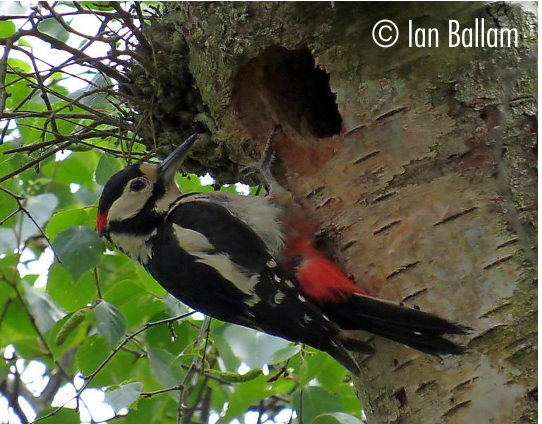
Parus major
Resident
Found in gardens, parks, woodland, urban and rural areas across the harbour. For the best views, go to the Arne car park and watch them feeding on the live feeder webcam in the visitors centre. Also at the Holton Lee feeding station Greeat Tit are numerous. A small autumn passage occurs in September and October with some birds logged passing over Ballard and across the harbour mouth. There is a chance these could be continental Great Tit.
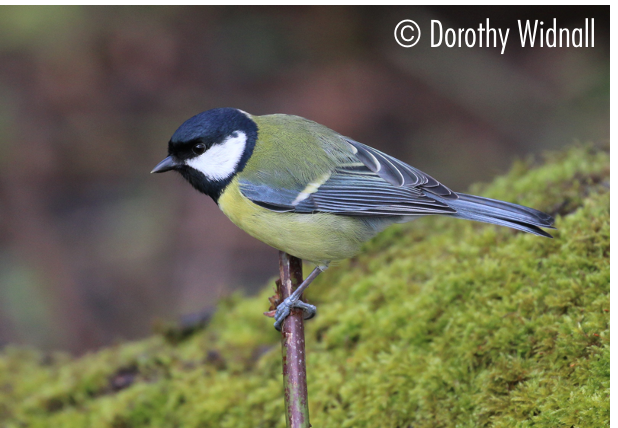
Ardea alba
Scarce Passage Migrant & Winter Visitor
The ‘rise of the white herons’! Originally a vagrant to the harbour but records are increasing rapidly. The first for the harbour and Dorset was at Ridge, Wareham on 5th Aug 1951. As recently as 2003 the total number of records for Dorset was only eleven. However, since 2013 records have become almost monthly with some incidents of multiple birds in late summer. Great White Egret now over-winter in small numbers (one-three) and in August 2018 a flock of 7 were found at Lytchett Fields. As the population increases up on the Somerset Levels and NW Europe its likely Great White Egret will become a coloniser of Poole Harbour within the next 5-10 years.
1 on 12th Jun 1974 over Brownsea Lagoon
1 on 2nd and 3rd Feb 1998 at Shipstal Point, Arne (J.Badley, D.N.S.Burgess et al)
1 on 14th Apr 2005 at Little Sea, Studland (G. Armstrong, H.G.Wood-Homer)
1 on 18th Sep 2009 at Brownsea Lagoon (D.J.Chown et al)
1 on 27th Oct 2011 at Brands Bay, Studland (B.Hunt)
1 on 15th Apr 2012 over Lytchett Bay (P.Morton)
1 on 15th Oct 2013 at Shipstal Point, Arne (P.Morton et al) went on to winter in Poole Harbour also being seen at Middlebere, Swineham, Stoborough and Holes Bay. There were records each month until 22nd Jun 2014. It is presumed that all records refer to the same bird.
1 on 13th Aug 2014 at Studland (many observers) stayed in the harbour until at least 31st Mar 2015. During which time it visited Middlebere, Newton Bay, Brownsea Island and Lytchett Bay.
1 on 28th Sep 2014 at Studland (many observers) where it joined the above bird and two were seen together in the harbour for the first time. Visiting Arne, Holes Bay, Slepe Heath, Upton CP, Brownsea Island. At least 2 birds remained until at least 17th Oct.
1 on 6th Jun 2015 at Brownsea Lagoon (G.Armstrong)
1 on 3rd Sep 2015 at Studland (G.Armstrong). Still present (Jan 16) having visited Arne, Stoborough, Rempstone, Middlebere and Brownsea Island,
1 on 18th – 20th Oct 2015 at Arne/Middlebere (many observers) where it joined the above bird and 2 were seen together.
Recent records
2016
Poole Harbour is the premier site in Dorset; the main sites are Arne, Brand’s Bay, Brownsea Island, Holes Bay and Little Sea Studland. Bird-days totalled 59.
Hatch Pond 1 on 24th Nov.
2017
Poole Harbour continues to be an excellent site for Great White Egrets with a max count of 5 on 3rd Dec. The total number of bird-days in Poole Harbour increased from 59 in 2016 to 105 in 2017.
East Holme 1 on 20th Apr.
Little Sea, Studland Singles on 3rd & 8th Jan, 4th & 8th Mar and 30th Nov.
2018
Poole Harbour is the premier site in Dorset; the main sites are Arne RSPB, Brand’s Bay, Brownsea Island, Holes Bay and Lytchett Bay/Fields and Little Sea Studland. Birds were reported in every month other than Apr and May. Birds are highly mobile and consequently it is difficult to estimate numbers for a large site such as Poole Harbour. That notwithstanding, 7 dropped in to Lytchett Fields RSPB on 14th Jul; this is the biggest single flock recorded to date in Dorset. 6 birds there on 20th Jul may well have been different birds given the large increase in the number of continental birds visiting the UK.
Holton Heath 1 on 27th Mar.
Swineham 1 on 27th Mar.
2019
Poole Harbour is the premier site in Dorset; the main sites are Arne RSPB, Brand’s Bay, Brownsea Island, Holes Bay and Lytchett Bay and Little Sea, Studland. Birds were reported in every month. Birds are highly mobile and consequently it is difficult to estimate numbers for a large site such as Poole Harbour. 1 or 2 birds were also reported widely including from Arne (every month from 3rd Jan-19th Nov), Brand’s Bay (3rd Sep, 12th, 16th & 17th Oct, 12th Nov and 8th Dec), Holton Heath (13th Sep and 16th Nov), Little Sea, Studland (several dates between 1st Jan and 14th Mar and 26th Aug-7th Dec), Lytchett Bay (11th Mar, 25th Jun, 3rd & 15th Aug, 10th, 13th & 15th Sep and 12th Oct), Middlebere (several dates throughout Aug, Oct & Nov).
2020
Poole Harbour Up to 3 Arne RSPB (Jan, Mar and Aug-Oct), Brand’s Bay (10th Jan, 30th-31st Aug and several dates 22nd-31st Oct, 1st-21st Nov and 17th Dec), Lytchett Bay (11th Sep-1st Nov), Middlebere (5th Jan and several dates in Aug, Sep and Nov) and Studland Heath (10th Jan and several dates 21st Sep-13th Nov).
2021
Up to 3 were recorded across the harbour and were present in all months expect May. Records came from RSPB Arne, Bramble Bush Bay, Brands Bay, Lytchett Bay, Middlebere, Stoborough, Studland/Little Sea, Swineham and the Wareham Channel.
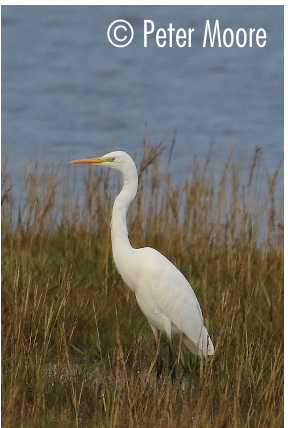
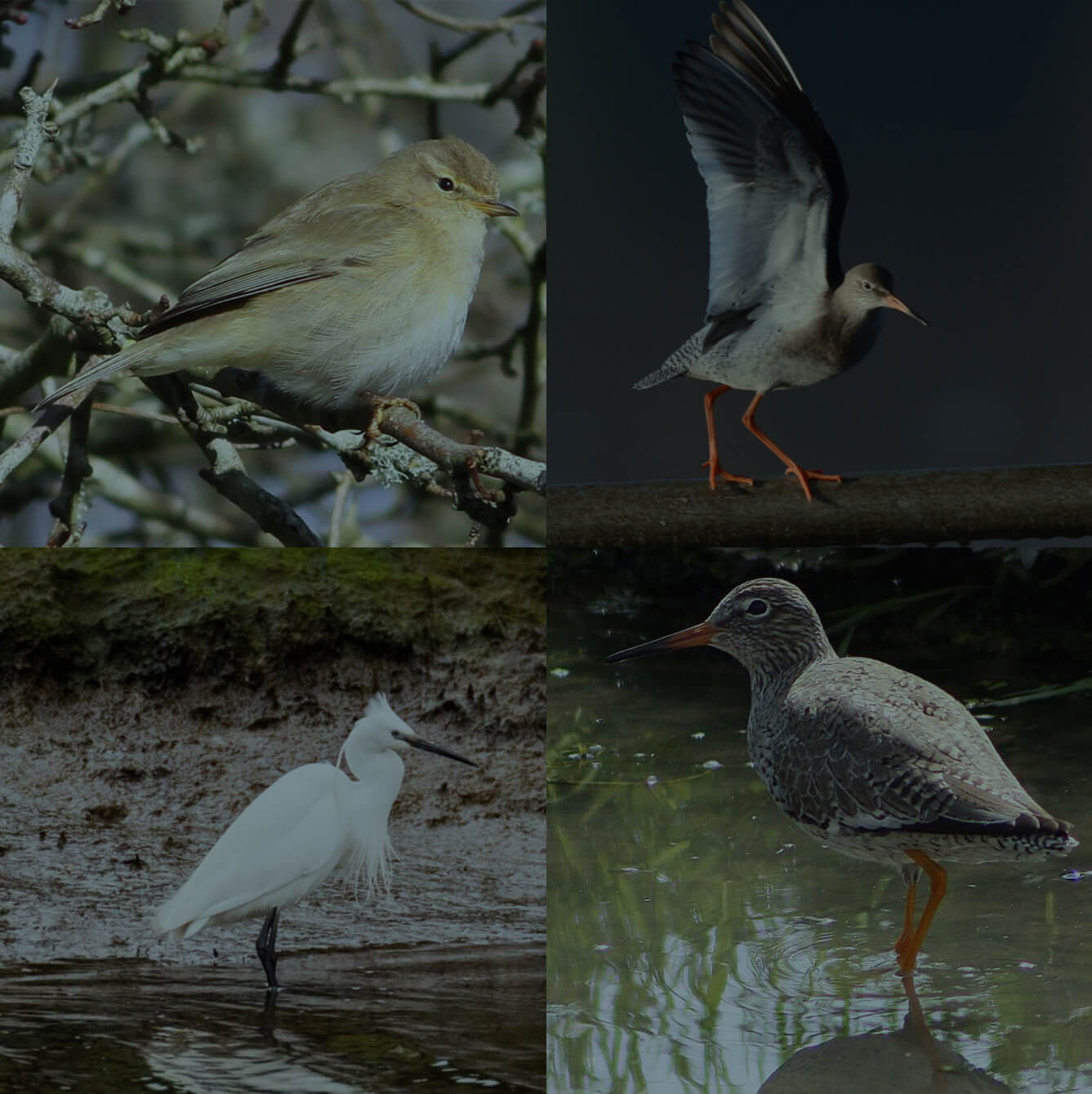
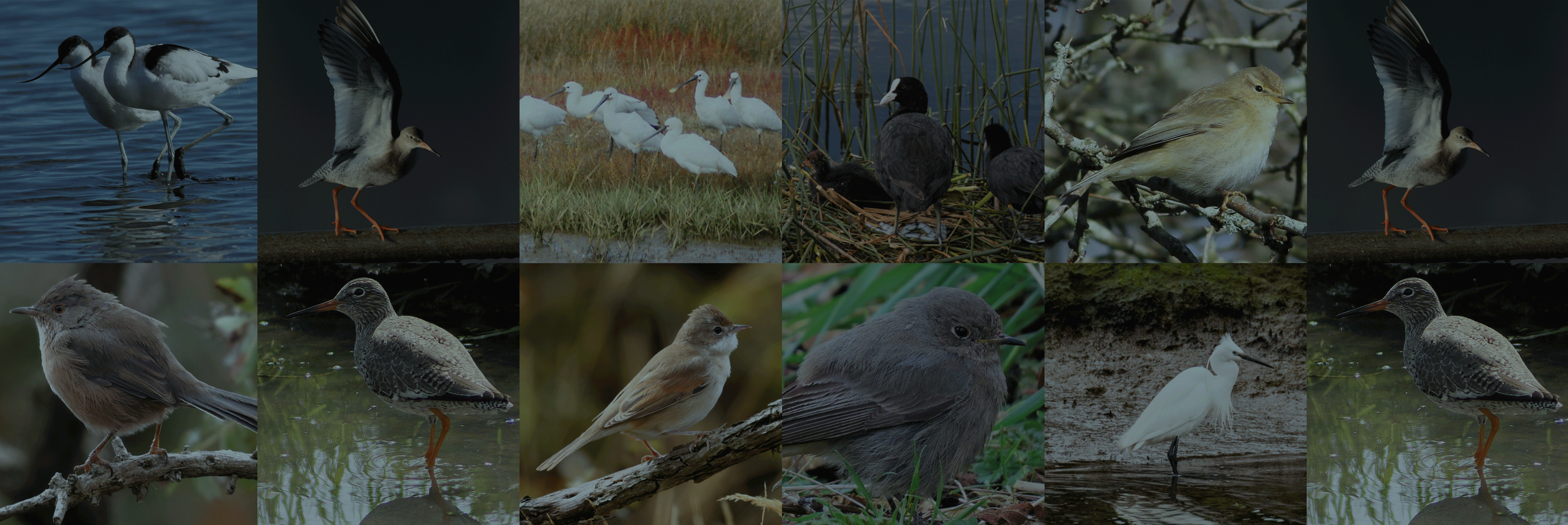
Media
Explore our videos, live wildlife webcams and sound recordings from Poole Harbour
© 2025 Birds of Poole Harbour Registered Charity No. 1152615
